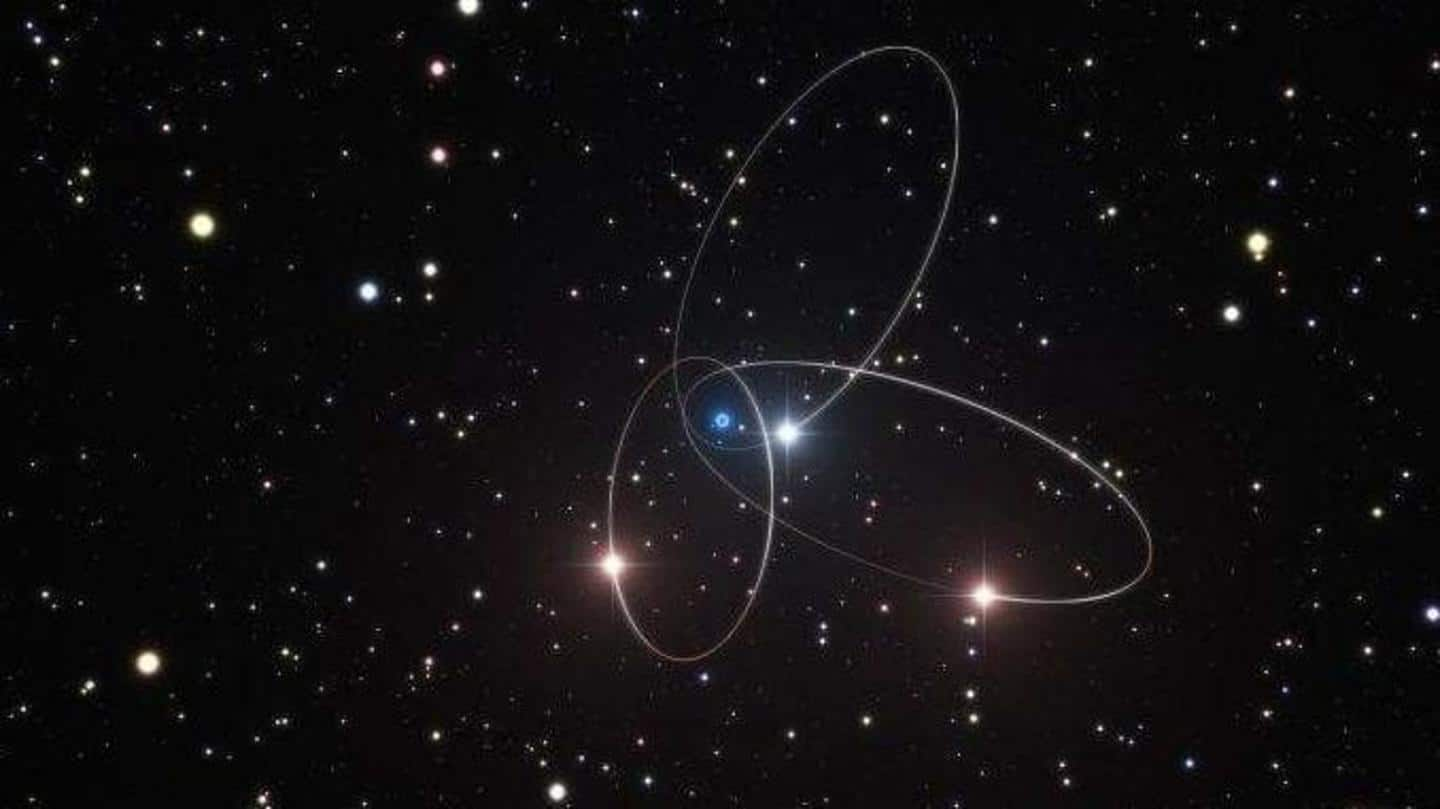
Fastest star ever discovered. It's traveling at 29-million km/hour
What's the story
Astrophysicists have discovered the fastest known star to mankind at the most unexpected of places - orbiting around the supermassive black hole Sagittarius A* in the Milky Way.
Designated S4716, the star is traveling at a blistering pace of around 29 million kilometers per hour.
It completes one full orbit of the supermassive black hole in four years, faster than any known star.
Context
Why does this story matter?
As we continue our search for uncharted territories, the universe has surprised us yet again. The S4716 is a reminder that there is a lot more to understand about our own galaxy.
And we also get a sense of how big the Sagittarius A* black hole is considering the newly-founded star takes four years to orbit it at around 29 million kilometers per hour.
Star
The S4716 comes very close to Sagittarius A*
The S4716 is part of a tightly packed group of stars called the S cluster that orbits close to the galactic center and Sagittarius A*.
It comes as close as 150 million kilometers to the supermassive black hole in the Milky Way.
Although this distance may seem incredibly far, in cosmic terms, it is a relatively close distance.
Uniqueness
What makes the star special?
It is unusual for a star to form this close to a supermassive black hole such as the Sagittarius A*. This suggests that the S4716's orbit shrunk over time.
"For a star to be in a stable orbit so close and fast in the vicinity of a supermassive black hole was completely unexpected," said Dr. Florian Peissker, the lead author of the study.
Importance
S4716 will help scientists understand evolution of fast-moving stars
The most famous star in the S Cluster is arguably S2, which takes 16 years to orbit around the Sagittarius A*. It comes only as close as 18 billion kilometers to the black hole.
The discovery of the S4716 so close to the Sagittarius A* could help scientists form a better understanding of our galaxy and especially regarding the evolution of the fast-moving stars.
Discovery
Four telescopes were combined into one large telescope for observation
The S4716 was discovered by researchers at the University of Cologne and Masaryk University. They used five telescopes for the discovery, including NIR2 and OSIRIS in Hawaii, and ESO's SINFONI, NACO, and GRAVITY.
Four of them were combined to form one large telescope for better and more accurate findings.
Dr. Peissker said that the discovery of S4716 showed the limitations of traditional telescopes.